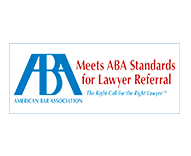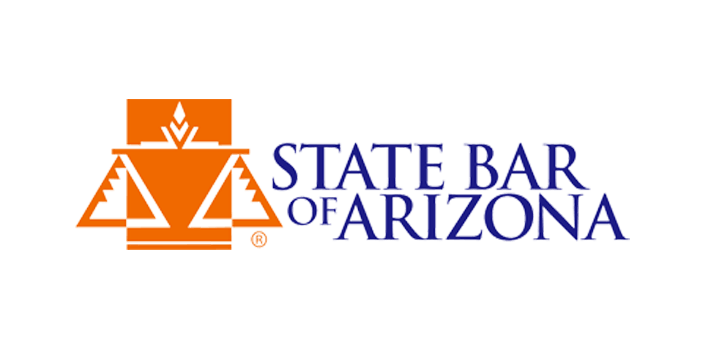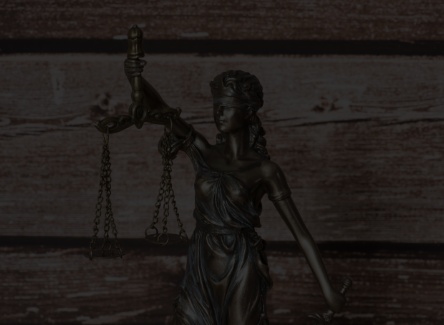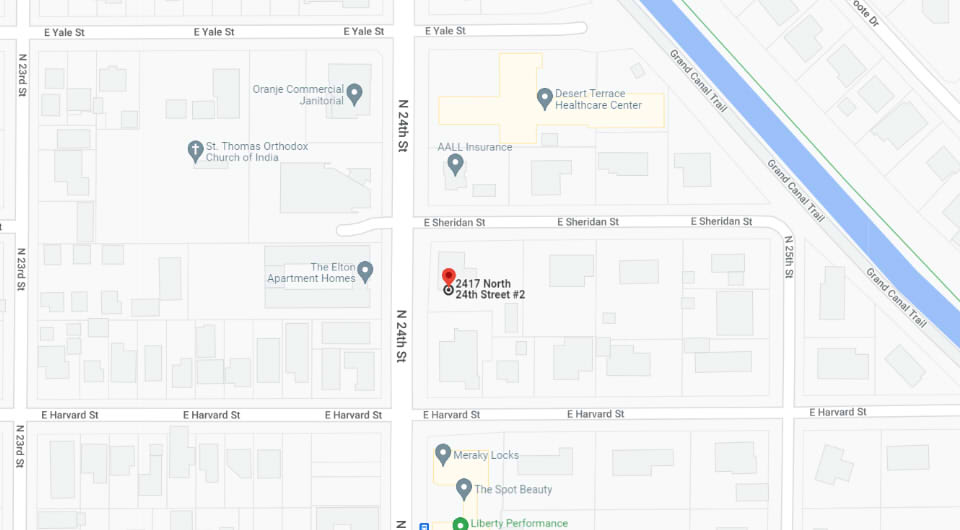Bus accidents happen more often than most individuals realize, and they are inherently hazardous than other motor vehicle-related collisions. Buses are large and heavy vehicles carrying many passengers without seat belts, increasing the risk of passengers sustaining severe injuries when the vehicle is involved in a crash. If you have been involved in an accident, you might have a right to compensation for the losses incurred. Consider the experienced legal team at Phoenix Personal Injury Attorney Law Firm to schedule your case review. During the review, we can determine the available legal options if you have a valid case and commit our resources towards obtaining the best possible case results for you.
Understanding Common Carrier Law
A common carrier is an entity whose business transports goods or people from point A to B. Carriers like buses offer services to the public under the authority of a regulatory body that sets safety standards. Regulations or not, carriers should exercise the highest level of diligence and care in the passengers' safety.
Therefore, you can sue the carrier for your injuries for either failing:
- to comply with a regulation, or
- to exercise the diligence and care expected of a cautious operator.
To establish the bus operator's fault in the negligence case, you must prove that:
- The defendant owed you a duty of care
- The defendant breached the duty
- The breach was the proximate cause of your injuries
- You suffered damages
Common Causes of Bus Accidents
Data from the Federal Motor Safety Carrier Safety Administration reports that about 35,000 persons were injured in bus accidents in 2016 alone. Buses are a common mode of public transportation in Arizona, and it is no surprise that the state has its share of accidents.
The term "bus accident" includes different modes of transportation, including:
- Private bus lines
- Public transportation buses
- School buses
- Hotel and airport shuttle buses
- Tour buses
- Private charter buses
The causes of bus collisions are identical to those related to car accidents. Generally, the crashes are due to another person's negligence. Common causes include the following:
Bus Company Negligence
The motorcoach industry transports at least 700 million passengers annually in the United States. Nevertheless, despite serving many passengers, bus inspection and record-keeping protocols are not strict. That means bus operators intentionally compromise public safety for a more significant bottom line. They often turn a blind eye to the federal regulations, keeping their fleet maintained or training drivers.
Older motor coaches, Greyhound buses, and school buses without safety equipment like seat belts increase the risk of injuries and deaths in bus accidents.
Aggressive Driving or Road Rage
While driving is never a competitive sport, some motorists engage in it. Road rage can take different forms, including attempting to run other road users off the way or aggressive tailgating.
Depending on the degree of the conduct, the motorist's behavior can be deemed reckless, which might entitle the accident victims to both punitive and compensatory damages.
Speeding
While bus drivers have pre-determined timetables, they are pressured to remain on their schedule. When traffic, weather, or road construction results in delays, there are temptations to make up that duration by speeding. Due to the massive size and weight, a bus has an increased stopping time, and speeding makes it more challenging for them to stop should traffic suddenly stop or slow.
Most vehicles can be equipped with speed governors that limit the amount of fuel to their engine after reaching a particular speed. However, most bus operators do not use them due to their quest for profit.
Faulty Equipment
Maintaining a bus is expensive, so many bus companies and drivers cut corners to save on costs. However, faulty equipment is more costly since it can cost lives.
The legal team at Phoenix Personal Injury Attorney Law Firm is experienced in analyzing the bus' repair history and maintenance schedule and identifying mistakes, oversights, and gaps. While sometimes the repair and maintenance work is done by an outside company, other times the cause of the accident is a design or manufacturing defect. If a defective part causes your accident, your lawyer should obtain the necessary paperwork and conduct a thorough investigation to determine the at-fault party.
Bus Driver Error
A driver error takes several forms, including failing to check blind spots, driving too fast for the conditions, and making wide turns. When the motorist causes your accident, the bus operator and their insurance provider will engage lawyers and experts to avoid compensating you. As a result, you need to level the playing field by hiring a skilled personal injury attorney. Your lawyer will work with expert witnesses who conduct independent investigations into the accident.
Distracted Driving
According to the National Highway Traffic Safety Administration (NHTSA), distracted driving causes approximately three thousand fatalities and 280,000 injuries annually.
Distracted driving involves anything that takes the driver's attention from the road. It can be talking to passengers, applying makeup, handling pets or children, zoning out, navigating GPS, or adjusting controls or music.
Using a cell phone while driving is the most dangerous form of distracted driving since it involves the driver:
- Taking their eyes off the road (visual distraction)
- Taking hands off the wheels (manual distraction)
- Focusing on something else other than driving (cognitive distraction)
It is illegal to text or use a phone while driving in Arizona unless the gadget is in hands-free mode. However, some drivers do not take the law seriously.
Violation of Hours-of-Service Requirement
The Federal Motor Carrier Safety Administration has imposed stringent regulations on bus drivers' service hours. The HOS regulation outlines how many hours a motorist can drive and rest. Regrettably, most drivers falsify their logs and operate their buses longer than lawfully allowed. Consequently, they become fatigued and can make severe and fatal errors.
Your lawyer should know how to analyze the bus driver's log with gas receipts, among other information, to determine whether the motorist has falsified their logs.
Other causes of bus crashes include:
- Drugs and alcohol violations
- Hazardous road conditions
- Hazardous weather conditions
- Bus driver fatigue
Liable Parties in Bus Accident
The responsible party during a collision is not always straightforward and might vary from one case to another. It is also possible for different parties to be liable for negligence.
Perfect examples of potential accountable parties include the following:
Bus Driver
It is the most straightforward scenario. A motorist can be negligent when they:
- Fail to comply with traffic laws
- Speed
- Change lanes carelessly
- Drive while under the influence of alcohol or drugs
- Drive while distracted
- Run red lights
The Bus Owner/Bus Company
Sometimes if the bus motorist behaves negligently, the bus company might be held responsible. The company is tasked with ensuring the driver is adequately licensed, trained, and supervised.
Moreover, the company should ensure the vehicle is maintained and receive all necessary repairs. The bus should have functional safety features. Otherwise, should an accident happen, the company will be held accountable.
The Motor Vehicle Manufacturer
A defective part can cause a motorist to lose control of the vehicle resulting in an accident. In this case, the manufacturer of the bus or the defective part can be held responsible for the collision.
Road Construction Company or the Government
If a poorly maintained or constructed road caused your accident, you could take legal action against the responsible government agency or the construction company.
Other Motorists
It is not always that the bus driver is at fault for a crash. Other drivers on the road can also be accountable.
How to Prove Negligence: Evidence
You must prove that the defendant's negligence directly led to your injuries to recover compensation. It includes establishing how the injuries happened and the degree of the damages.
Your personal injury attorney can assist you in collecting relevant proof to support the claim, including:
Accident Report
Following an accident, the police officers will draft a police report. It would be best to ask for a copy of the report since it creates a link between your accident and injuries.
It offers an objective perspective on the accident's details. Generally, the report will include information like:
- Where the collision happened
- The accident's cause
- Parties involved in the accident
- Injuries sustained
Witness Statements
If possible, gather the names and contact information of all witnesses. Your skilled lawyer might require following up with the individual to acquire a statement from them.
A witness testimony increases the courtroom's awareness about the occurrence and the injuries. A witness can be an observer at the accident scene or a loved one. Sometimes a witness testimony can be a recording or on paper.
Medical Records
You should collect medical records since medical expenses form a considerable portion of the compensation award or settlement. Some of the common injuries sustained in bus accidents include:
- Broken bones
- Head injuries
- Traumatic brain injuries
- Spinal cord injuries
- Internal bleeding
- Lacerations and cuts
- Severe skin burns
- Sprained and torn ligaments
- Whiplash
- Chest injuries
- Herniated disks
Medical records offer information about the injuries sustained, including their seriousness, medical treatment received, degree of the pain, and any future medical attention you might need.
Keep records of your medical bills, prescriptions, discharge information, treatment received, receipts, and hospital statements. Request copies of your medical records from all health care providers you consult with or visit.
Lost Wages
The injuries could hinder you from returning to work, whether for days, weeks, or months. Since you have a right to compensation for the income you lost during this time, you should gather proof of the time you missed and the income you should have made.
If your physician recommends that you engage in reduced assignments or not return to work, ensure you acquire a copy of the doctor's note. It should indicate the duration you should miss work.
Additionally, request your employer a letter specifying the number of days you missed work. If you used your vacation time, request that your document include the details.
Photographic Proof
Photographs offer a visual representation of critical aspects of the personal injury claim. Showing the jury photographic images of the defendant causing the problem or acting negligently makes it less challenging to win the case. A video has similar effects.
Ensure you capture pictures of:
- Property damage
- Accident scene
- Your injuries and their recovery progress
Pain Journal
Your lawyer might require you to keep a daily journal documenting your injuries and pain as you heal. It shows how injuries affect your life. Ensure you note down everything you are feeling associated with your injuries.
Communication Record
If you discuss your claim with the insurer, keep records of the conversation, including:
- who contacted you,
- what you talked about, and
- Also, save all letters and emails.
Insurance adjusters are experienced at acquiring information from plaintiffs and then using it against them to lower the payouts.
After hiring an attorney, let them handle communications with the insurer on your behalf.
Preserve Your Evidence
After you have gathered the relevant evidence, ensure you preserve it. Videos and photos need a backup, while you should keep physical evidence in a location away from tampering. It would help if you also took witness statements quickly.
Personal Injury Litigation
Resolving a personal injury lawsuit involves numerous steps that you should understand. However, in most cases, seasoned personal injury attorneys resolve the claims before trial, saving you money, hassle, and the uncertainty linked to trial litigation.
Here is an overview of different steps in personal injury litigation:
-
Issuing a Demand Letter
After your initial consultation, your lawyer will review your case and determine whether you have a valid claim, the possibility of receiving compensation given the case facts, and its worth in damages. The legal counsel will analyze your fault and determine if your compensation amount is greater than the insurance firm's offer.
Your lawyer has adequate information to issue the opposing counsel a demand letter for compensation. There might be a back-and-forth, with the opposing advocate trying to negotiate for a lower compensation amount. If your attorney can convince them that you have chances of succeeding at trial, you have significant leverage in the negotiations.
-
Filing a Complaint
If your initial settlement discussions fail to realize a favorable outcome, your lawyer will initiate a lawsuit by bringing a formal complaint with the court.
The complaint should include your claim against the at-fault party, justification of the claim, and the compensation amount you are seeking.
After filing your complaint and serving the defendant a notice, they can respond to the accusation. The defendant can elect to bring a counterclaim depending on your case facts.
-
Discovery
Discovery is a fact-finding process where all parties ask questions and request documents. The process can help you have insights into issues you could not have known by gathering evidence and bus accident investigations.
Your savvy lawyer should use discovery to make requests justified by case facts and defend you diligently against intrusions.
-
Pre-Trial Procedures
Personal injury claims do not necessarily resolve at trial. Motions are filed, and you can resolve the case through dispute resolution methods like mediation and arbitration. When your case settles outside the courtroom, the defendant or their insurance company will offer you an offer that compensates for your losses.
You will sign a liability waiver to receive the agreed-upon monetary damages in your settlement. Please note that the liability waiver binds you, and you cannot receive more money even after later discovering:
- your losses were more substantial than anticipated, or
- your injuries were more expensive or painful
Your attorney should protect your rights by negotiating and reviewing the settlement offer before accepting it.
-
Trial Litigation
If you did not reach an agreement, your case would proceed to trial. Generally, a trial can take weeks or even months, depending on the case complexity. During the trial, both the defendant and the plaintiff will present their evidence, introduce witnesses, challenge witnesses, and present convincing arguments.
Where Personal Injury Claims are Filed in Phoenix
There are three (3) court systems in Arizona where you can bring your lawsuit, namely:
- Federal court
- State-level superior court
- Justice of the peace court
Most personal injury cases are brought in the county's superior court where the defendant resides or where the bus accident occurred. However, there are instances where a plaintiff can file a lawsuit in any of the two other courts.
Justices of the Peace Courts
Justices of the peace courts have limited jurisdiction. The courts can only hear specific cases, including traffic violations.
Arizona has 88 justices of the peace courts. Every court has a small claim division that handles cases whose total claimed damages are not more than $3,500.
The court system's rules are relaxed, and you do not have to seek legal representation unless all involved parties agree to hire lawyers.
Superior Court
You can only bring your lawsuit in superior court if your damages are above $1,000. There is no cap to the compensation amount a plaintiff can claim.
Federal Court
Federal courts only handle personal injury cases involving a violation of the U.S. Constitution or federal laws or when there exists complete diversity. There is complete diversity when:
- You and the defendant live in different states
- The case's worth exceeds $75,000 in damages
Just because you can file your case in a federal court, it does not mean you should bring it there. There are benefits and disadvantages of filing in a federal court, and your lawyer should guide you accordingly.
Appellate Court
If the superior court's decision does not please you, you can petition the appellate court to review the decision.
Please remember the statute of limitations for filing your personal injury lawsuit is two years from the date of your bus accident. If the timeframe elapses, you will not recover damages. To ensure you file the proper paperwork to the correct court and at the right time, contact a knowledgeable Phoenix personal injury attorney.
What is the Average Settlement or Compensation Award for a Bus Accident Case?
If you have been injured in a bus accident, you only have one opportunity to recover compensation for the injuries and the related expenses. As a result, you cannot overlook the importance of a legal expert familiar with the full range of damages you can recover.
Common damages awarded in personal injury claims include:
- Medical bills — The defendant should compensate you for all medical expenses incurred from the bus accident. It also includes future medical bills.
- Lost wages — If you missed work after sustaining an injury, you are entitled to compensation. You should also receive damages that cover your future wages if you cannot return to work.
- Pain and suffering suffered due to your accident
- Loss of consortium
- Emotional distress
Calculating Your Damages
Medical expenses and lost income are economic damages, and they involve expenses that can be determined by looking at your receipts and bills. You can use data of your current losses to estimate the total compensation amount of your future losses.
Pain and suffering damage is non-economic damage, and it can be challenging to assign a monetary value to it. Typically, the court uses a multiplier method. The method multiplies the economic damages with a number between one and five depending on your injuries' severity.
Punitive Damages
These damages are meant to punish the at-fault party for egregious conduct or extreme recklessness. An act that can lead to a punitive damage award would be a case where a bus driver intentionally rams into your car because you annoy them.
Find a Seasoned Personal Injury Attorney Near Me
Public transportation can be a pocket-friendly and convenient means of traveling from one point to another or commuting to work. However, an accident can occur, resulting in substantial losses from lost wages and medical expenses. When you suffer injuries due to another person's negligence, you have a legal right to hold the defendant accountable.
Phoenix Personal Injury Attorney Law Firm has decades of experience and expertise in assisting plaintiffs in receiving their deserved compensation. We take pride in recovering billions of dollars for all our clients. We can approach your case with dedication, determination, and compassion to defend your rights. Please contact us at 602-641-9589 for more information.










